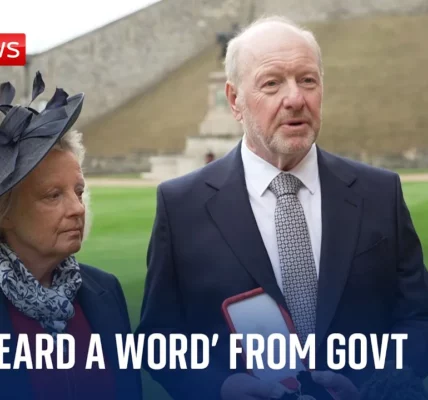Labour Party’s Energy Policy and Political Strategy in Scotland

The Labour Party’s recent announcements regarding energy policy and political strategy in Scotland signal a significant shift towards green energy and a commitment to addressing the concerns of the Scottish electorate. This article delves into the implications of these announcements, the challenges ahead, and the broader context of the party’s election strategy.
Introduction
In a pivotal moment for the Labour Party, discussions surrounding energy policy and electoral strategy have come to the forefront, particularly in Scotland. With the government striving to navigate the delicate balance between transitioning to green energy and maintaining a stable economy reliant on fossil fuels, the stakes have never been higher. As Labour aims to reclaim seats lost over the past decade, this article explores the party’s plans, the responses from various stakeholders, and the broader implications for the future of energy in the UK.
The Energy Transition: A Balancing Act
The Labour Party’s commitment to green energy is framed within a broader narrative of economic stability and job security. This section examines the key aspects of this transition.
Publicly Owned Energy Company
One of Labour’s central proposals is the establishment of a publicly owned energy company, tentatively named Great British Energy. This initiative is aimed at countering the privatization of energy resources that many argue has failed consumers. The party believes that by utilizing homegrown energy sources, they can reduce energy bills, which have surged due to external factors such as the war in Ukraine.
- Headquartered in Scotland
- Planned launch within months
- Focus on renewable energy sources
Commitment to Green Energy by 2030
Labour has pledged that all electricity consumed in the UK will come from renewable sources by 2030. This ambitious target involves substantial investment in various technologies:
- Offshore and onshore wind
- Solar energy
- Hydrogen production
- Emerging technologies yet to be implemented
Achieving this goal will require a significant expansion of green infrastructure across the UK, necessitating both public and private investment.
Fossil Fuels and Job Security
While Labour’s green energy ambitions are clear, the party faces criticism regarding the potential impact on jobs in the fossil fuel industry, particularly in Scotland.
Concerns from Trade Unions
Trade unions, which traditionally support Labour, have expressed apprehension about the proposed ban on new oil and gas drilling licenses in the North Sea. This has led to claims that the party is initiating a “ban without a plan.” The unions advocate for a comprehensive strategy that considers the livelihoods of those employed in the fossil fuel sector.
Labour’s Response to Criticism
Labour leader Kier Starmer has addressed these concerns by emphasizing that the transition will not occur overnight. He stated:
“We’re not turning off the taps. Oil and gas will be part of the mix for many years.”
This statement aims to reassure voters and industry workers that the transition will be gradual and strategic, allowing for the continued operation of existing licenses while fostering investment in green technologies.
Political Landscape in Scotland
The upcoming election is crucial for Labour, especially in Scotland, where they have historically struggled to gain traction. This section highlights key political dynamics influencing the party’s strategy.
Importance of Scottish Seats
Labour’s electoral strategy hinges on reclaiming seats currently held by the Scottish National Party (SNP). The party is targeting a significant number of constituencies, potentially between 20 and 30 seats out of a total of 57. Winning these seats is viewed as essential for Labour’s chances of regaining power in the UK.
Collaborative Leadership
The partnership between Kier Starmer and Scottish Labour leader Anas Sarwar has become increasingly visible. Their joint appearances aim to project a unified front, essential for rallying support in Scotland. However, differing views on internal party matters, such as the candidacy of Diane Abbott, illustrate the complexities within Labour’s leadership.
Conclusion
The Labour Party’s recent announcements regarding energy policy are a strategic attempt to navigate the challenges posed by the green energy transition while addressing the concerns of voters and industry workers in Scotland. As the party prepares for a crucial electoral battle, its focus on establishing a publicly owned energy company and committing to 100% green electricity by 2030 marks a significant shift in policy. However, the path forward will require careful management of existing fossil fuel industries to ensure job security. As Labour continues to forge its way through the political landscape, the support of trade unions and the electorate will be vital for its success. For more insights on Labour’s strategies and energy policies, visit our related articles on the political landscape and energy transitions.
“`




